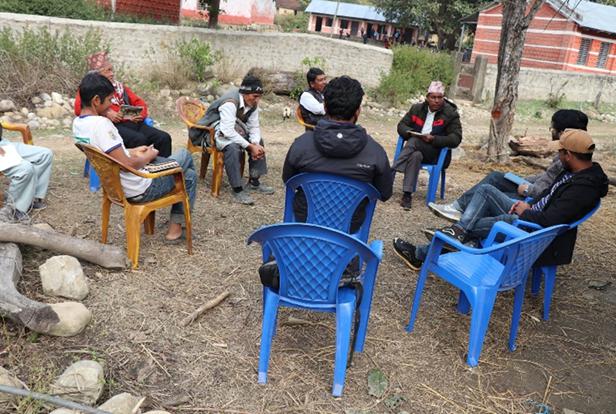Social media video featuring the project.
Tiger marking its territory
11 Dec 2019 Dang, Nepal, Indian Sub-continent Carnivores | Education | Mammals
Strengthening the Community Tolerance and Ownership on Two Big Felids (Tiger and Leopard) Conservation in Banke National Park and Kamdi Corridor
Working with Communities in the Banke-Bardia Complex to Reduce Human-Carnivore Conflicts
Churia section is topographically difficult to work so we have few research activities from that area. During this project we will work on churia section of Banke National Park (BaNP) to know the intensity of poaching. Community Based Anti-Poaching Unit (CBAPU) will be actively participating with us. Remote areas of BaNP villages in Dang (Querine) and Salyan (Malaya Jaljala) district’s schools will be visited to share the importance of conservation. Finally, a research paper based on diet analysis (tiger and leopard) will be shared to national and international level. We hope this project will contribute BaNP and other conservation organization to safeguard the future of felids.

Despite the continuous efforts and investments in controlling illegal activities, the threat is still roaming (Dinerstein et al., 2007), where conservation is interspersed with human settlements. Large felids have been hit hard by deforestation, habitat fragmentation and prey declines. Protection of habitat alone is not sufficient, park management decision for increasing activities to check poaching of potential prey species is necessary. So that management regimes could robust landscape- scale conservation strategies. It is true that conservation of large carnivores in human dominated landscape is challenging especially from developing countries (Woodroffe, 2000).
Churia section is topographically difficult to work, so we have very less research activities from that area so, at least this time our team wants to join the Community Based Anti-Poaching Unit (CBAPU), park rangers and game scouts and Nepal army to work together. The project aims to focus on three dimensions; research, awareness and collaboration for the conservation of tigers and leopards from the Banke National Park (BaNP).
1. Research: Molecular scatology will be adopted in order to distinguish the scats of tiger and leopard. Further, after the conformation of scats between two felids, scats sample will be proceeded for diet analysis. This will be the first high quality research on felids feeding ecology from BaNP which is essential for BaNP to safeguard the tiger population. Besides, research will focus on the Churia section of BaNP where disturbances level and indirect signs of prey poaching will be studied, where surveyors will walk around 1km with the grid cells of 2*2 km square. Till date very few quantitative studies to document the disturbance level and signs of prey poaching has taken place. So, this project will help to coin the status of churia and supplement in conservation intervention for BaNP in future.
2. Awareness: School awareness program for conservation activities from Buffer Zone (BZ) of Salyan and Dang districts are not sufficient. Conservation awareness program and drawing competition will be conducted with school children in remote areas of BaNP villages in Dang (Querine) and Salyan (Malaya Jaljala) districts. Students will be involved in disseminating the awareness of felids conservation around their locality.
3. Collaboration: During the project period we expect to maintain local community partnership through, Buffer Zone Management Committees (BZMCs), Community Based Anti-Poaching Unit (CBAPU). The project will maintain the collaboration with BaNP, Nepal Army, National Trust for Nature Conservation (NTNC), Biodiversity Conservation Center (BCC) throughout the project period.
Social media video featuring the project.
Tiger marking its territory